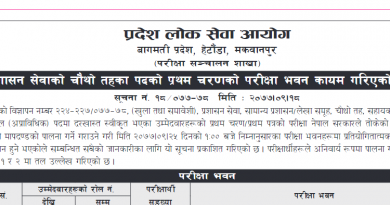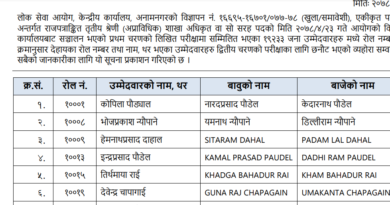Economic Survey 2081/82 Nepal PDF– Complete Summary
Nepal’s economy accelerated significantly in the fiscal year 2081/82 (2024/25), with real GDP growth reaching 4.61%, up from 3.67% the previous year. This rebound – marked by easing inflation, surging exports, and strengthened remittances – signals broad-based recovery, though structural challenges persist.
Download economic survey here : PDF
1. Macroeconomic Overview
- Projected Real GDP Growth (2081/82): 4.61%
- Previous Year (2080/81): 3.67%
- Total GDP (Nominal): NPR 61 Kharab 7 Arba
- Per Capita Income: NPR 165,233 (up from NPR 159,177)
- Inflation Rate: 4.72% (down from 6.08%)
2. Public Finance
- Total Revenue (2080/81): NPR 11 Kharab 50 Arba 99 Crore (+10.4%)
- Federal Share: 92%
- Provincial + Local: 8%
- Total Expenditure (2080/81): NPR 16 Kharab 40 Arba 68 Crore
- Federal: 64.2%, Provincial: 9.9%, Local: 25.9%
- Fiscal Deficit: 2.53% of GDP
- Public Debt to GDP Ratio: 42.64%
- Domestic Debt: NPR 13.15 Kharab
- External Debt: NPR 13.60 Kharab
3. Agriculture, Forest, and Land Reform
- Sector Growth: 3.28%
- Major Activities:
- Distribution of agricultural machinery and seeds
- Land reform and mapping programs
- Agricultural product diversification
4. Industry, Commerce, Supply, and Tourism
- Industrial Contribution to GDP: 12.83%
- Exports: NPR 1 Kharab 58 Arba (+57.2%)
- Imports: NPR 11 Kharab 45 Arba (+11.2%)
- Trade Deficit: NPR 9 Kharab 87 Arba (↓6.2%)
- Tourist Arrivals: 798,000 (↑1.7%)
- Tourism Revenue: NPR 56 Arba 70 Crore (↑9.7%)
5. Infrastructure, Transport, and Energy
- Total Electricity Production: 3,602 MW
- Electricity Consumption Distribution:
- Household: 35.3%
- Industrial: 29.0%
- Commercial: 6.3%
- Export: 19.7%
- Road Connectivity: All districts connected
- Digital Banking Access: All local governments have at least one bank branch
6. Education and Social Sector
- School Enrollment Rate: Over 95% in all provinces except Karnali
- Drinking Water Access: Significant improvements in Karnali and Sudurpashchim
- Vaccine Coverage: Maintained above 90% nationally
- Pro-Poor Scholarships & Health Grants: Expanded to rural and underprivileged communities
7. Financial Sector
- Credit Growth: Increased toward productive sectors like SMEs and agriculture
- Green Finance: Nepal Green Finance Taxonomy launched
- Banking Reach: 100% of local governments have banking access
- Inflation Rate: 4.72% in 2081/82
8. External Sector
- Remittance Inflows: NPR 10 Kharab 51 Arba (+9.4%)
- Foreign Exchange Reserves: Improved due to tourism and remittance recovery
- Export-Import Ratio: Slight improvement due to export increase
🧑💼 9. Employment and Poverty
- Unemployment & Underemployment: Significant rural-urban divide remains
- Over 6 Lakh Foreign Employment Permits issued (up to Falgun 2081)
- Poverty Rate: Official national update not provided; still under SDG monitoring
10. Environment and Climate Change
- Green Energy Initiatives: Expansion of solar, micro-hydro and forest programs
- Climate Adaptation Programs: Implemented in partnership with development partners
11. Provincial Economic Status
- Highest GDP Growth Province: Gandaki – 5.51%
- Lowest GDP Growth Province: Sudurpashchim – 3.32%
- Bagmati Province has the highest budget share; Madhesh the lowest in FY 2081/82


